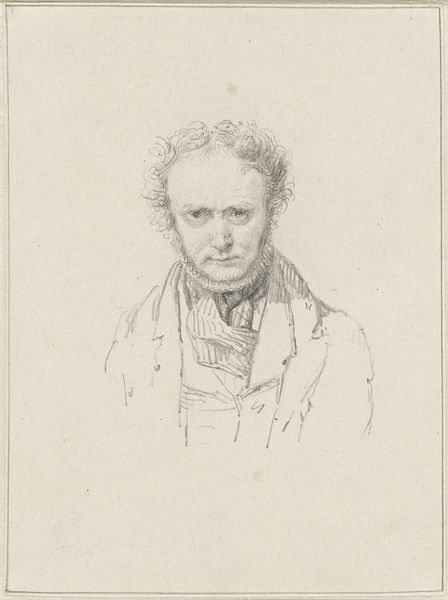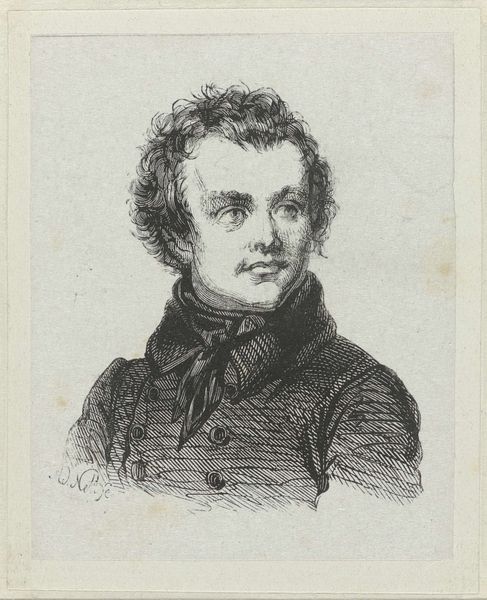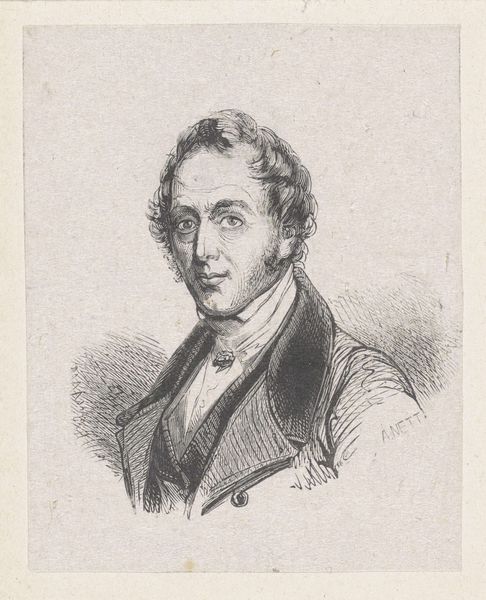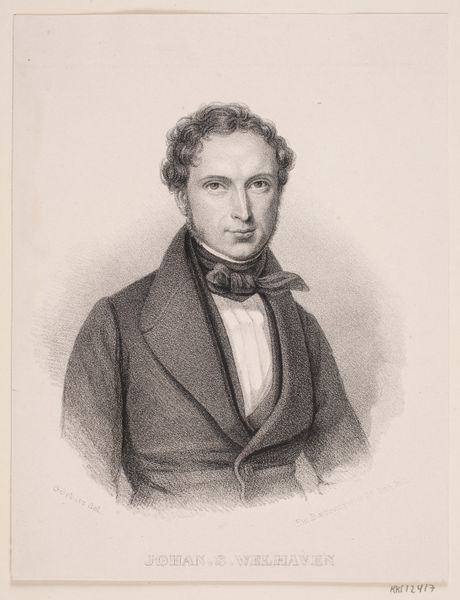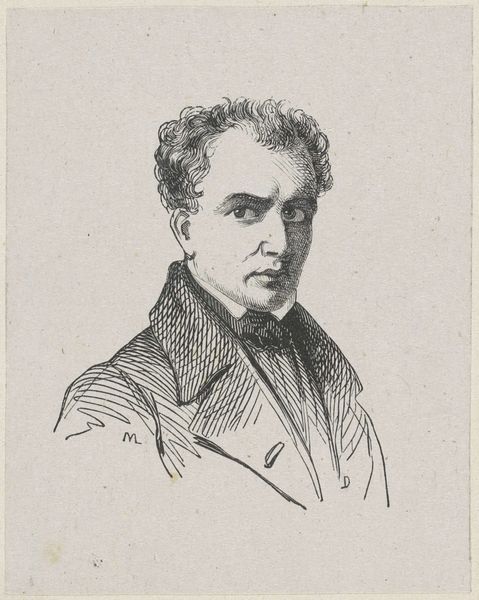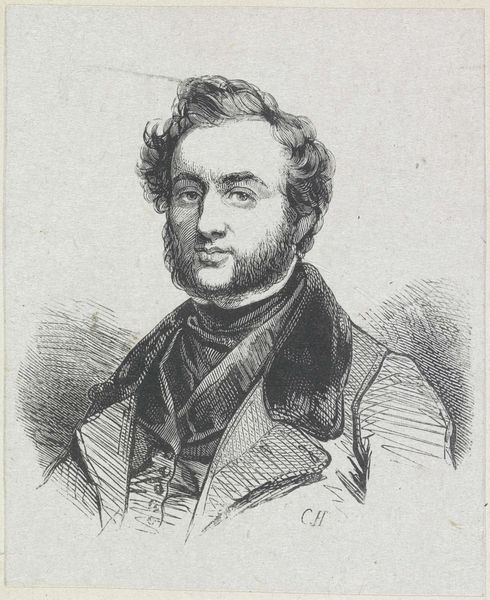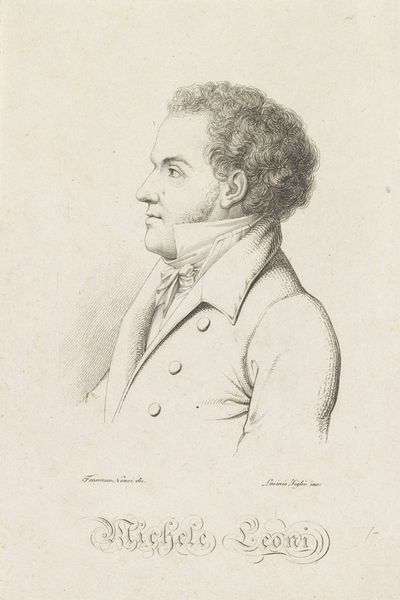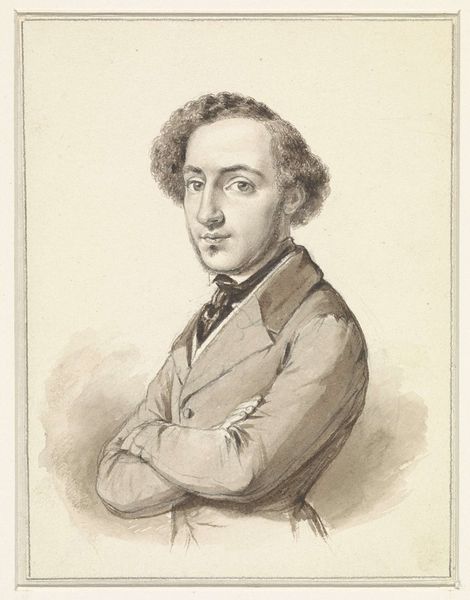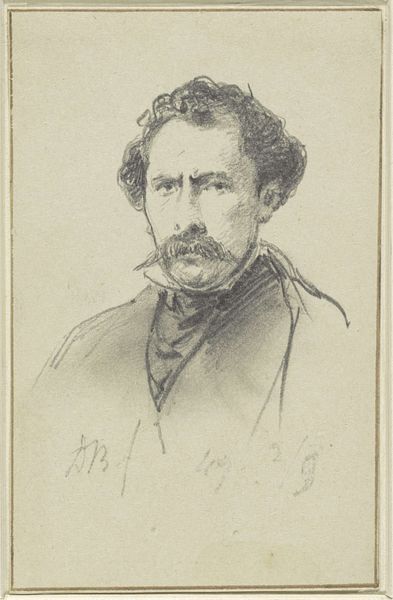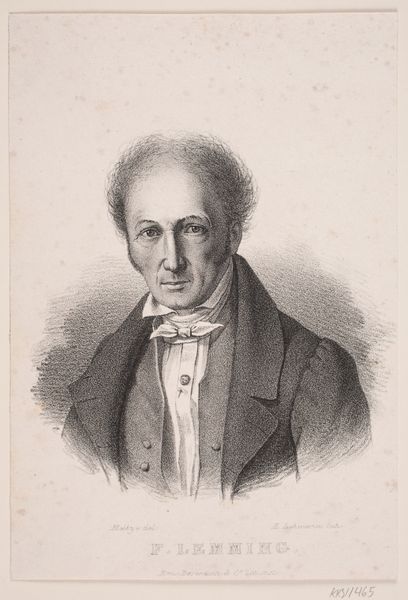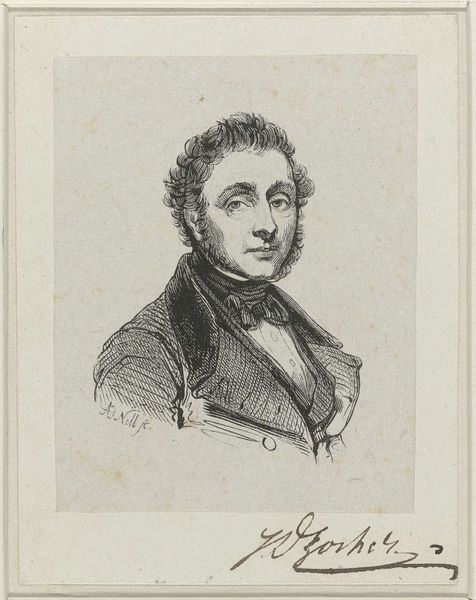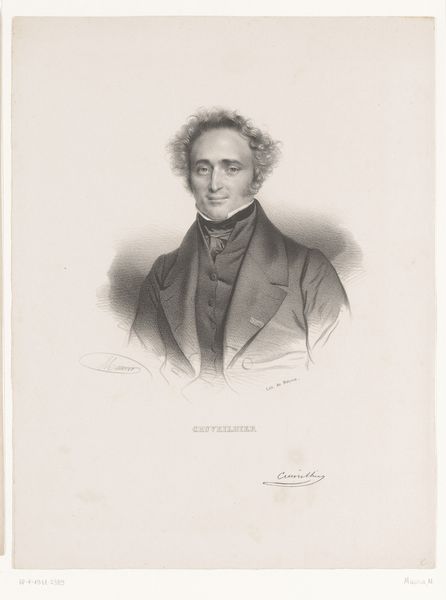
drawing, ink, pencil
#
portrait
#
pencil drawn
#
drawing
#
pencil sketch
#
figuration
#
ink
#
pencil drawing
#
pencil
#
line
#
portrait drawing
#
academic-art
#
realism
Dimensions: height 70 mm, width 56 mm
Copyright: Rijks Museum: Open Domain
Curator: Adolphe Frédéric Nett produced this sensitive portrait, around the mid-19th century, of I.J. van Regemorter, using pencil and ink. It is currently held at the Rijksmuseum. Editor: It strikes me as a very pensive and almost weary depiction. The tight linework emphasizes every crease and wrinkle. There’s a gravitas that feels quite personal. Curator: Nett’s technique is certainly noteworthy here. The fine, cross-hatched lines built up the tonal range, revealing the texture of the paper itself. We should also consider the academic artistic standards against which the piece was created. What was this portrait intended for and what was the societal impact of images portraying bourgeoisie members like Van Regemorter? Editor: Exactly, we can view it within a context of evolving class structures. Visual representation increasingly included merchants and professionals, reflecting their growing social and economic importance. Who was Van Regemorter, and what was his role in shaping that 19th-century social landscape? How did he benefit, how did others benefit, or not, from such representation? Curator: Regemorter himself belonged to that class; he worked as a commissioner in Rotterdam. Nett's piece offers a rare glimpse into how such figures chose to be memorialized at the time. Considering its place among similar portrait drawings allows us to map broader consumption patterns. Editor: Thinking intersectionally, could we see something here that reflects anxieties surrounding rapidly changing social hierarchies of the period? Is there a dialogue occurring between Van Regemorter’s own sense of self and how he wanted to be viewed? How might issues of identity or social capital play out? Curator: I appreciate you framing it in that manner. Looking at how portraiture influenced self-perception among rising social classes illuminates shifts in self-expression itself. Editor: Agreed. Analyzing this portrait prompts meaningful considerations of identity and representation in 19th-century society. Curator: Ultimately, this work serves as an invaluable lens through which we can understand the evolving values, beliefs and expectations tied to image-making and self-representation in that historical moment.
Comments
No comments
Be the first to comment and join the conversation on the ultimate creative platform.
